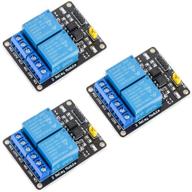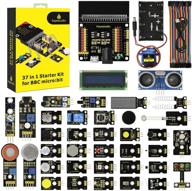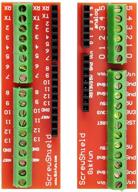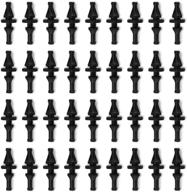
Review on 10PCS OSOYOO Obstacle Avoidance Sensor Kit with IR Transmitting, Receiving Tube, and Photoelectric Switch for Arduino, Raspberry PI 4, 3 Model B - Ideal for Smart Cars and Robots by Rafael Gomez

High failure rate. (I think they can only be rated for 3 volts)
I have to agree with others on the high failure rate of this product. They seem to be working at first, but I've only bought 20 sensors and only 6 are still working (4 of which have not been used yet). I used them with an Arduino project; I powered them directly from the Arduino (5V output) and after a few days of work (2-4 days) the sensors failed - this happened several times. (See my theories on this below.) HOW THEY (SHOULD) WORK: Sensors reflect IR light off an object and trigger an output signal when the light hits an IR (phototransistor) detector. There is a power LED and a status LED. The power indicator is on as long as power is present. The "Status" LED lights up when an object is detected. These sensors do not use a modulated IR lighting system (e.g. a TV remote control). They are relatively simple in the sense that they only detect infrared light. Because infrared light comes from many sources (incandescent, LEDs, possibly some/all fluorescent, sun), exposure to these light sources triggers the sensors. If you can hide the sensors from direct ambient light (by using them in a project box or under some sort of disguise) they will be more reliable. (They become useless if exposed to too much ambient IR light. Increasing sensitivity also increases the effect of ambient light.) DISTANCE: In terms of distance, I've only used them to find objects 1-2 inches away to see, but they don't seem able to see much further than that. Adjusting the potentiometer does increase the sensitivity/distance, but only by a VERY SMALL AMOUNT before the sensor locks out only a low output (power LED and status LED remain on) until you adjust the sensitivity again. (I'm assuming the potentiometer can set the sensor's op-amp reference voltage outside of the phototransistor's output range, so the output just gets stuck.) REPEATING FAULTS: As I said above, these sensors seem to fail repeatedly and constantly. . If they fail, the power indicator stays on, but they no longer detect objects. So far, 14 sensors have failed, each within a few days of power-up. In my project, I powered them from the Arduino's 5V pin for a few days. (The Revain details say they work in the 3-5V range.) I was starting to wonder if they were "burning out" so I tried connecting them to a 3.3V output instead. All Sensors (I have 5 working at the same time) are currently running fine in 3 days while waiting for more to come out. WHY (I THINK) THEY FAIL: What I noticed when trying to adjust the sensitivity of a faulty sensor (before I knew they were actually dead) is that adjusting too far would cause the status LED/output to accurately turns on like a working sensor. This led me to believe that only the IR emitter was defective and not part of the detection circuitry. I think I've proved this to be the case by putting an external IR LED on the sensor and even a TV remote (although its output emits IR light pulses so expect pulses) on the sensor and it reacted like she should. I'm wondering which resistor on the board is not enough to power the LED with 5V. (I don't know if the LED or the resistor blew as I didn't bother to disassemble and fix these $1 sensors.) I hope the 3.3V supply prevents, that the sensors continue to fail. A little more time will tell. For now, suffice it to say that "you get what you pay for”. For the price, they're good for experimentation, but they don't seem built to last (or maybe just don't work at 5 volts).
- New to my collection
- ---
New products
Comments (0)
Top products in 🖥️. Single Board Computers

🌐 MCIGICM 2 Channel DC 5V Relay Module: Optocoupler Low Level Trigger Expansion Board for Arduino UNO R3, DSP, ARM, PIC, AVR, STM32, Raspberry Pi

11 Review

55" TV LG OLED55C2RLA 2022 HDR, OLED, dark titanium

38 Review

🎁 Ultimate BBC Micro bit Sensor Starter Kit: Keyestudio 37-in-1 Box with Tutorial, Compatible with V1.5 & V2, Gift for Kids and Adults (Microbit Board Not Included)

11 Review

Gikfun Screw Shield Expansion Board: Enhance Arduino UNO R3 with the EK7007 Add-On

11 Review
Another interesting products

🖥️ Helifouner 450-Piece Computer Standoffs Spacer Screws Kit: Ideal for Hard Drive, Motherboard, Fan, Power Graphics & Computer Cases

10 Review

36-Pack Black Rubber PC CPU/Case Fan Screws/Rivets Set for Computer

11 Review

MacBook Retina 13-inch (A1425, A1502) and 🔩 15-inch (A1398) Bottom Case Screw Set with Pentalobe Screwdriver

11 Review

Comprehensive 500pcs Laptop Screw Kit Set for 🔩 IBM HP Dell Lenovo Samsung Sony Toshiba Gateway Acer

12 Review

